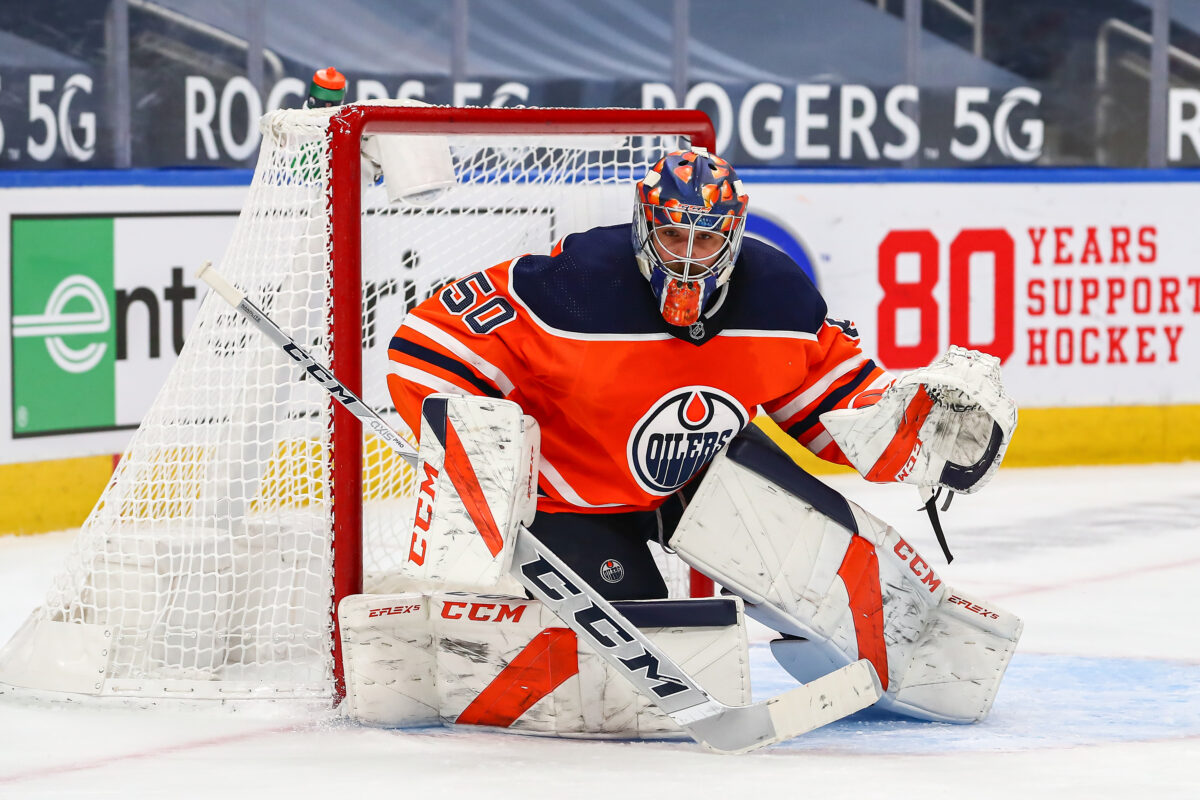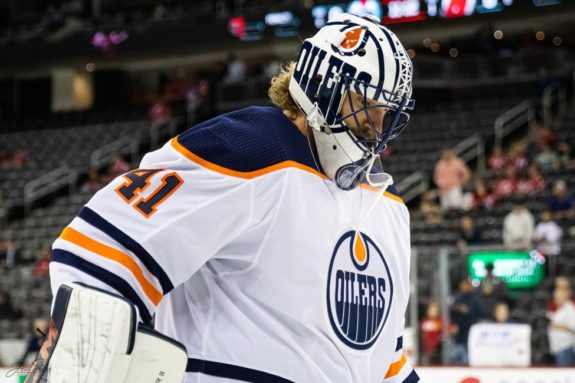It’s a real backbreaker to a team when most nights they play very well, but they get “goalie’d.” The previous two games for the Edmonton Oilers have seen them allow 12 goals, 11 of which were against a goaltender and only one on an empty net. Eight of the goals have been on Mike Smith, the so-called starter in Edmonton, and the other three were allowed by Mikko Koskinen in relief vs. the Minnesota Wild.
Related: Oilers and Islanders Make Good 2022 Trade Deadline Partners
The Oilers are in a very tight race to make the playoffs, and every game matters a lot. They can’t have more games than not where the goaltender can’t make a key stop or is allowing weak goals early and often. It’s deflating, despite how the team has responded as of late. It forces them to take more risks instead of paying full attention to detail on defence. In the offensive zone, players are going to be deeper, allowing for odd-man rushes the other way more often. Forwards will be leaving the defensive zone earlier looking for breaks offensively.
Oilers’ Goaltending by the Numbers
The talk around town used to be Koskinen’s first goal reputation, but now it’s turned to how horrible Smith has been to start games. Either way, the Oilers need stops so they’re not fighting from behind at the start of more than 70 percent of games. We’ve all seen how dominant they can be when they get the lead first, going 15-0-0 — the only undefeated team when scoring the first goal.
Courtesy of fellow Oilers THW writer Brian Swane, Smith has allowed two goals on six shots or fewer in seven of the past 10 games.
- St. Louis Blues: Two goals on four shots
- New Jersey Devils: Two goals on three shots
- Vegas Golden Knights: Two goals on six shots
- Chicago Blackhawks: Two goals on two shots
- Anaheim Ducks: Two goals on six shots
- Minnesota Wild: Two goals on four shots
- Tampa Bay Lighting: Two goals on five shots
The second goal against the Lightning came with 14 seconds left in the first period. So, the Oilers held the two-time defending Stanley Cup Champions to just five shots, but were losing 2-1. That was a very good period for everybody except Smith, and giving up a goal in the final minute is always deflating anyway. Positioning and reflexes can be questioned on a couple of the goals against, especially in that last game.
Unlike Koskinen, Smith has put the Oilers at even more of a disadvantage allowing two goals on so few shots. Koskinen usually seems to settle in afterwards and make big saves, but that hasn’t exactly been the case for Smith.
What makes things worse is the Oilers continue to go with Smith and Koskinen as their starting tandem if they are both healthy despite having their best goaltender stewing in the American Hockey League (AHL). Desperate times call for desperate measures. I wouldn’t exactly say recalling Stuart Skinner is a desperate measure, but it is certainly desperate times in Edmonton with their goaltending situation. Of course, Jay Woodcroft doesn’t want to throw his goaltender under the bus like the previous head coach did, but suggesting the team played well and fought hard is an indication of what he’s thinking. The players did their job, but weak goals put the game just out of reach.

For a goaltender who has played 14 career games, Skinner has very solid numbers and something the Oilers could use immediately before they fall back of contending teams like the Los Angeles Kings, Ducks, Nashville Predators, and Dallas Stars. Skinner has a 2.62 goals-against average (GAA) and .913 save percentage (SV%) this season, much better than both goaltenders the Oilers continue to roll with. Even more baffling, is he just earned his first career shutout, the fastest rookie in franchise history to do so. Then he was sent back down to the AHL right after.
Skinner is a homegrown talent that is the future in net. But with how Smith and Koskinen have performed this season, the future needs to arrive sooner. Skinner has also been excellent in the AHL this season, going 9-1-3 with a 2.33 GAA, .918 SV%, and two shutouts. It is the second consecutive season for the Bakersfield Condors where he has dominated the crease.
2 Options the Oilers Have to Choose From
The first is to replace Skinner on the active roster and waive one of Smith or Koskinen. With Smith’s recent showings and Koskinen’s decent play as of late, Smith would actually be the better option to send down. I saw it brought up that both Smith and Koskinen should be waived simultaneously to see if a team bites and takes their contract. Unlikely, but still worth a shot if the Oilers plan on ridding themselves of both by year’s end.

The next option that builds off of the previous one is trade for a goaltender now. Just because the trade deadline is in a month doesn’t mean teams have to wait until then. Trading has already begun, and almost anything seems better than what the Oilers have right now on their starting roster. If general manager Ken Holland wants to get really creative and give the Oilers a blank sheet to work with next season he could try and get rid of both Koskinen and Smith and run with the newly acquired goaltender, rental or not, and Skinner.
Smith has one year left at $2 million, but there is a very slim chance he makes it to next season as a member of the Oilers. Whether they trade him, bury him in the minors, or buy him out of the last year of his deal, the Oilers need to get younger, and a 40-year-old isn’t helping with that.
Related: Oilers Prospects Who Could Be Traded in Deadline Deals
I mentioned trading for a goaltender, and I’m hoping Holland is at least trying to get something done now. But if he isn’t and he’s trying to see if the team can ride it out to mid-March, it could take them out of a manageable position and force them to fight an uphill battle for the remaining 30 games where every game is getting tougher to win.